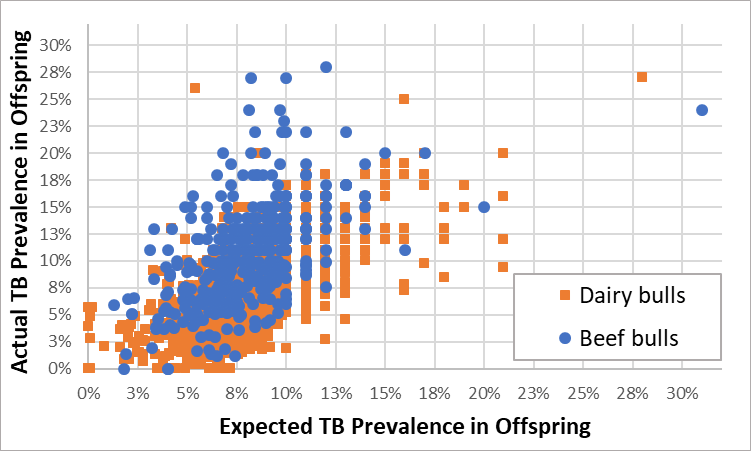What seems like a never ending battle with bovine tuberculosis (TB) has lead many to believe that aspirations of eradicating it, may never happen.
However, until recently, the genetic makeup of cattle had never been considered as part of the solution.
Siobhán Ring, a geneticist with the Irish Cattle Breeding Federation (ICBF), outlined how certain family lines produce cattle more resistant to TB, and how ICBF’s genetic evaluation can help to identify them
Bovine tuberculosis research
Following research undertaken at Teagasc Moorepark, in conjunction with ICBF and the Department of Agriculture (DAFM), data has revealed that certain family lines of cattle are more prone to becoming TB reactors.
Siobhán stated: ”In the same way that genetics influences milk production and weight gain, animal health is also under genetic control”.
”For example, some bulls that had many offspring in TB infected herds, 30% of their progeny became TB reactors, while other bulls produced offspring in the same TB infected herds where none of their progeny were diagnosed as TB reactors.”
Research findings
”Following years of research, ICBF has made breeding values for resistance to TB available for genotyped animals,” Siobhán added.
Farmers can use these breeding values to select bulls that are less likely to produce offspring that will become TB reactors.
These animals will have a more favourable breeding value for TB resistance which could prevent a TB out-break within the herd, the consequences of which could lead to a herd passing or failing the annual test.

Breeding Value
Siobhán outlined that each animal’s breeding value for resistance to TB is expressed as the predicted prevalence of TB in that animal’s offspring.
The lower breeding values, the more desirable a bull is for breeding.
A bull with a value of 10% for resistance to TB is predicted to produce offspring where, on average, one in every ten of his offspring will be diagnosed as a TB reactor.
Even cattle in herds that never had a TB-breakdown will have breeding values for resistance to TB.

Siobhán concluded by stating: ”With new stringent testing protocols and potential funding cuts coming down the line, the pressure to eradicate TB is ramping up.
“For farmers looking to avoid TB-outbreaks, breeding cattle more resistant to TB is a free, easy, and complementary tool.
”There has never been a better time to protect your herd from a TB-outbreak. Breeding values for resistance to TB are available for genotyped animals on the ICBF website.”
In summary:
- Breeding can help identify how likely an animal and its offspring is to become a TB reactor;
- Breeding values for resistance to TB are available for genotyped animals on the ICBF website;
- When selecting cattle for breeding, choose bulls that have the highest overall index (EBI, replacement Index, or terminal Index) and the lowest predicted prevalence of TB infection (bulls coded as green or orange for TB resistance).
